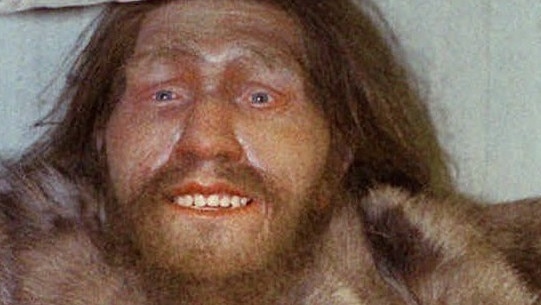Neanderthals ‘had burial rituals’
A Neanderthal skeleton found in Iraq has reopened a decades-long debate as to whether they performed death rituals.

A 70,000-year-old Neanderthal skeleton found in the foothills of Iraq has reopened a decades-long debate as to whether they were culturally sophisticated enough to perform death rituals.
The remains, consisting of a crushed but complete skull, upper thorax and both hands, were recently unearthed at the Shanidar Cave site 800km north of Baghdad. Although its gender is yet to be determined, early analysis suggests the skeleton, named Shanidar Z, is more than 70,000 years old and has the teeth of a “middle- to older-aged adult”.
The cave has been home to remains of 10 other Neanderthal people excavated about 60 years ago, with clumps of ancient pollen surrounding one of the skeletons.
The presence of pollen was seen by some archaeologists as evidence these hominid species not only buried their dead but did so with flowers, challenging a widely held belief that Neanderthals were dumb and animalistic. The discovery of pollen captured the public imagination and the Shanidar Cave became famous as the “flower burial” site.
Chris Hunt, a professor of cultural paleoecology at Liverpool John Moores University in England, described Shanidar Z as “a truly spectacular find”.
“The upper remains are staggeringly complete, although the skull was flattened by compression under many tonnes of cave sediment,” he said.
“The body was placed in a depression on the cave floor in a semi-reclining position, with a big stone lying behind the head.”
Four of the 10 Neanderthals at the site were positioned in what researchers described as a “unique assemblage”, raising a question as to whether they were returning to the same spot to lay their dead.
Professor Hunt said: “We have four bodies within an area the size of a small dinner table and chairs. If we were dealing with modern people, this might merit the use of the word ‘graveyard’, but this is a step too far for our understanding of Neanderthal behaviour.”
Graeme Barker, from Cambridge University’s McDonald Institute of Archaeology, said: “The new excavation suggests some of these bodies were laid in a channel in the cave floor created by water, which had then been intentionally dug to make it deeper. There is strong evidence that Shanidar Z was deliberately buried.”
The team is also analysing sediment samples from Shanidar Z, along with traces of pollen and charcoal from the site, to ascertain more about Neanderthal life.
Emma Pomeroy, from Cambridge University’s department of archaeology and lead author on the study, said: “In recent years we have seen increasing evidence Neanderthals were more sophisticated than previously thought, from cave markings to use of decorative shells and raptor talons.”
The findings are published in the journal Antiquity.
PA



To join the conversation, please log in. Don't have an account? Register
Join the conversation, you are commenting as Logout